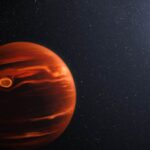Have you learn something associated about supermassive black hole? Blackhole is a area in space the place nothing can escape it.
After studying this weblog, you’ll know intimately about supermassive blackhole. Also you’ll know sorts, formation and life cycle of blackhole.
We have created this weblog after studying tons of books and scientific papers additionally use NASA blogs to create this weblog.

What is Supermassive blackhole?
Supermassive blackhole is a blackhole which is greater than the stellar blackholes that creates from collapse of single large star.
According to review, it’s clear that this varieties of black holes are current on the centre of most of galaxies, together with our personal milky manner galaxy.
This sort of black holes are greater in mass than sun, which may vary from tens of millions to billions occasions. These are troublesome to watch instantly as a result of they don’t emit gentle.
History of analysis
In 1963, first investigation was accomplished by Maarten Schmidt, initially it was thought that star because of spectrum puzzling.
Later when Hubble telescope launched in 1990, which have extra decision to watch galactic nuclei. In 1994, Hubble firstly observe Messier 87 surrounded by ionized gasoline was orbiting central a part of the nucleus, at a velocity of ±500km/s.
Also Read: Ozone hole is shrinking, a large hole over the Antarctic.
Formation
Formation of supermassive black hole stays an energetic a part of analysis. According to astrophysicists there are numerous theories that may inform about formation of supermassive black hole.
- First principle says that, this was created from mixture of many gasoline dust of close by galaxies.
- Another principle is that merging of smaller black holes, by including plenty of personal creates supermassive.
- Otherwise each processes can participate in formation.
- However additionally attainable that it might be current from huge bang, means comparatively early within the Universe.
Evidence
Evidences of supermassive black holes are
- Doppler impact, through the use of doppler impact astronomers detect the presence of black holes. Whereby gentle from close by orbiting matter is red-shifted when receding and blue-shifted when advancing.For matter very near a black hole the orbital pace have to be comparable with the pace of sunshine, so receding matter will seem very faint in contrast with advancing matter, which signifies that techniques with intrinsically symmetric discs and rings will purchase a extremely uneven visible look.
- In our personal Milky manner, we get the proof of presence of black hole within the centre of galaxy. It nearly 26,000 gentle years from solar system.
- Outside of our galaxy, within the native galaxies M31 and M32 and few galaxies past local group equivalent to NGC 4395.
- Also our close by galaxy, Andromeda galaxy incorporates supermassive black hole greater than milky manner galaxy.

Some names of Supermassive black hole
Names are mainly on the placement of black holes within the galaxy, listed here are some examples
- Sagittarius A*- the supermassive black hole current on the centre of milky manner galaxy.
- M87*- on the centre of galaxy Messier 87.
- NGC 1277- One of probably the most large supermassive black hole, often known as “the monster”
- Cygnus A- Radio galaxy situated within the constellation Cygnus
- BL Lacertae – a supermassive black hole within the centre of quasar BL Lacertae
- IC 4329A – a Seyfert galaxy situated within the constellation Virgo, which incorporates a supermassive black hole with a mass of round 1.4 billion occasions that of the sun.
- HE 0450-2958 – It is a quasar situated within the constellation Dorado, incorporates a supermassive black hole with a mass of round 1.7 billion occasions that of the sun.
- SDSS J010013.02+280225.8 – It is a quasar situated within the constellation Cetus, black hole with a mass of round 12.7 billion occasions that of the sun.
- TON 618 – It is a quasar situated within the constellation Canes Venatici, black hole with a mass of round 66 billion occasions that of the sun.
- OJ 287 – a BL Lacertae object situated within the constellation Cancer, black hole with a mass of round 18 billion occasions that of the sun.







